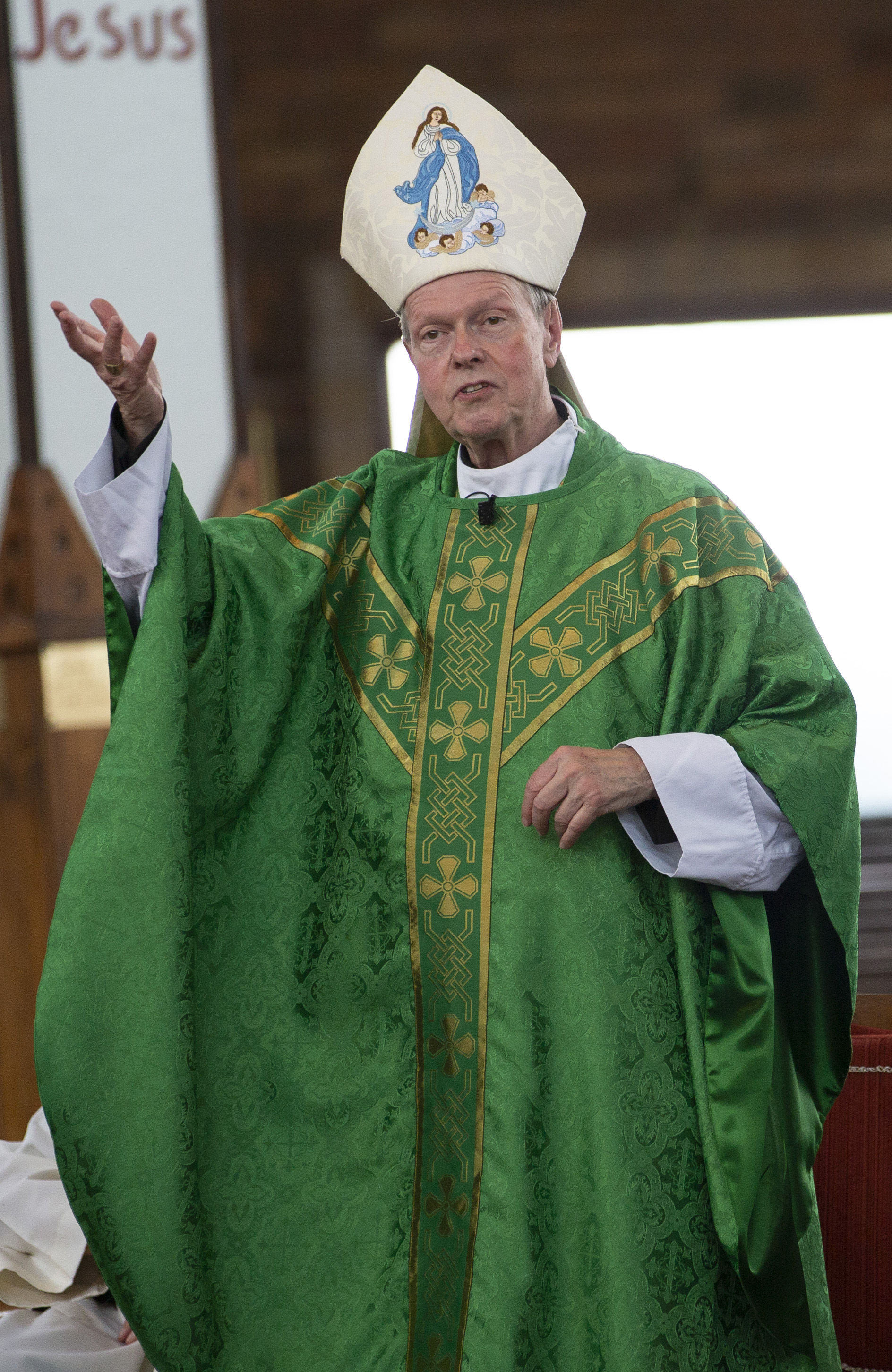August 9, 2022 at 2:35 p.m.
It is certainly not a bad motto for a place dedicated to the formation of priests, who, after all, are called to go out and to help people discover or deepen that love and fire of Jesus Christ. I remember one faculty member saying frequently, “make sure that you have that fire and that you bring it to others … and never let the fire go out!” He knew well the dangers of letting that fire grow dim or even cold, or as another person put it, of just leaving the pilot light on and nothing more! But, of course, all this applies to all of us who belong to the Body of Christ. When we were baptized, all of us received that fire of the Holy Spirit and the joy of new life in Jesus. We are to have hearts set on fire and to share that fire with all whom we meet.
In reporting our Lord’s words, St. Luke mentions this great symbol of fire. (Incidentally, St. Matthew, in his account of these words of Jesus, uses an even more startling image: not fire, but the sword!). If we think about it, fire is a symbol used frequently in the Scriptures and in the Church, especially with respect to the Holy Spirit. It is worth taking a moment to reflect on what fire does and why it is such a great religious symbol. Fire cleanses and purifies. In the days before antibiotics, medical instruments were sanitized by fire to make them safe for use. Fire is essential in the process of smelting and purifying ore, so that the ore can be refined into a usable material such as iron or gold. In this sense, fire divides or separates what is needed and useful, from the dross or waste. Fire also brings warmth and light. It is a wonderful and comforting experience to sit in an easy chair in front of a log fire on a cold winter’s night! Fire can, of course, be destructive as we see in the terrible fires that ravage huge areas and destroy communities. But fire is also essential for some seeds to germinate and to regenerate dying vegetation. No wonder then that fire is a powerful religious and spiritual symbol.
How can we have that spiritual fire and how can we make sure that this fire does not dim? Perhaps there are two, vital things. First, we need to feed that flame and fire. After all, if you do not put fuel on a fire and there is no oxygen, then it will go out! Prayer time, the sacraments (especially the Eucharist), deepening our knowledge of the faith or becoming involved in some form of outreach to those in need: all these are ways that we can fuel the fire. Sometimes, we may feel that the fire in our faith and our relationship with the Lord is dying or fading. That is exactly the time to reignite the flame and ask for the Lord’s help. After all, if you are beginning to feel cold, the last thing you do is to move away from the fire.
As disciples, we also need to share that flame of faith and love with others, who are so often searching for a warmth and light in their lives that the fire of Christ can bring. We might be the “spark” that someone needs. Often, this is not a sort of “in your face” type of faith or behavior, but rather simply by how we live our lives, by our attitudes and values, by how we see others and by how we treat them. In other words, how others can see that fire and love of Christ shine out from within us. This is often the most effective way of evangelizing and of being disciple-makers: after all, fire is contagious! What is more, in doing this, somehow the flame in our hearts also seems to be brighter again.
So, our Gospel challenges us to check on the fire that is in our heart and soul. How strong and bright is it? Does it need more fuel? And, do we burn to share that fire with others?
SOCIAL MEDIA
OSV NEWS
- Across the world, Christmas shines even — and especially — in the darkest places
- Full text: Pope Leo XIV’s ‘urbi at orbi’ message
- Full text: Pope Leo’s homily on Christmas Day
- Open your hearts to baby Jesus and one another, pope says on Christmas
- Scripture series by popular Catholic speaker offers deep dive into the person of Jesus
- To turn away others is to turn away God, pope says on Christmas Eve
- Arriving at the manger with Caryll Houselander
- Barrett discusses Dobbs decision, Roe’s ‘flawed’ reasoning, life at the court, her faith
- Bishop: To welcome immigrants is to follow God’s ‘divine command’ to care for the stranger
- Jesuit search, recovery of migrant remains finds bodies of 2 women in difficult desert terrain








Comments:
You must login to comment.